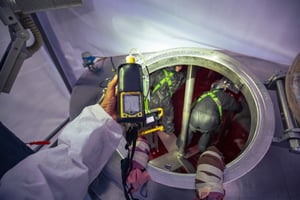Maintaining safety on dangerous sites is a paramount responsibility for businesses and...
What are the dangers of complacency?
Safety is a crucial aspect of any organisation's operations, and maintaining a good safety record is a significant achievement. However, a concerning phenomenon can occur when organisations become complacent due to their successful track record. Complacency sets in when an organisation begins to overlook or downplay potential risks, leading to a lapse in safety standards. In this post, we will explore the danger of complacency in organisations with good safety records and how it can pave the way for accidents and incidents.
Celebrating Successes, Ignoring Risks
A strong safety record is a reason to celebrate, as it signifies that an organisation has implemented effective safety measures and protocols. However, organisations that overly focus on their successes may become less vigilant in identifying and addressing potential hazards. As a result, they might ignore warning signs or neglect safety updates, leading to a false sense of security.
Normalization of Deviance
When organizations experience a prolonged period of safety success, employees may start to view risky behaviours as acceptable because they haven't experienced immediate negative consequences. This normalisation of deviance can lead to the gradual erosion of safety practices and an increase in risk-taking behaviour.
Inadequate Training and Reinforcement
With a good safety record, organisations might become complacent in providing comprehensive safety training to new employees and continuous refresher courses to existing staff. As complacency takes root, training might become less rigorous or less of a priority, leaving employees ill-equipped to handle potential hazards.
Underreporting of Near-Misses
In organisations where complacency reigns, there might be a tendency to underreport near-miss incidents. Near-misses are valuable opportunities to identify potential risks and prevent accidents from happening in the future. When near-misses go unreported, the organisation loses a chance to learn from them and improve safety standards.
Lack of Continuous Improvement
Organisations with good safety records may become resistant to change, believing that their current practices are sufficient to maintain safety. This lack of continuous improvement can hinder the organisation from adapting to new challenges and emerging risks.
Overconfidence in Technology and Automation
In technologically advanced industries, organisations might become overly reliant on automation and technology to ensure safety. While these advancements can enhance safety measures, they should not be seen as a replacement for human vigilance and oversight. Overconfidence in technology can lead to neglect of basic safety protocols, ultimately resulting in accidents.
Conclusion
Maintaining a good safety record is a commendable achievement for any organisation, but it should never lead to complacency. Complacency can be insidious, gradually eroding safety practices and increasing the risk of accidents and incidents. To prevent complacency from setting in, organisations must foster a culture of continuous improvement, where safety is always a top priority. This includes providing regular and comprehensive safety training, encouraging the reporting of near-miss incidents, and regularly reassessing safety protocols.
Organisations must also avoid normalizing deviant behavior and overreliance on technology, understanding that no amount of success can guarantee immunity from potential risks. By remaining proactive, vigilant, and committed to maintaining a robust safety culture, organisations can ensure that their good safety record remains a genuine reflection of their ongoing dedication to the well-being of their employees and the overall success of their operations.







